Судьба «румынского золота» в России 1916–2020. Очерки истории - [85]
This cargo was sent to Russia by two trains. The first train left on December 14>th (27) from the Iasi station and arrived in Moscow on December 21 (January 3, 1917). 1.738 boxes with gold coins and gold ingots in the amount of 314.580.456 gold lei and 2 chests with Queen Mary’s jewels worth another 7 Million gold lei were dispatched.
Gold was placed in the storerooms of the Moscow Kremlin. Each room had doors with different locks. It was only possible to get into the storerooms with both keys, one of which was kept by the Russian representative and the other by the Romanian representative.
Despite the deterioration of the political situation in Russia after the 1917 February Revolution and the ongoing collapse of the Romanian front, the Romanian government decided to send a second train to Moscow. The valuation of property, which arrived in Moscow, was made without any inventory, based on a verbal statement by a representative of the National Bank of Romania in the amount of 6.5 billion gold lei, which was equal to 2,495,000,000 gold rubles at the time. Up until October 1917, 101 boxes of valuables were transferred to the Romanian side and the Romanian gold reserve decreased by 444,000 gold rubles.
The February and October revolutions in 1917, followed by the establishment of the Soviet regime in Russia, have affected the fate of Romanian gold in Moscow. After the breakup of diplomatic relations with Romania in January 1918 owing to the seizure of Bessarabia by Romanian troops, the Soviet government stated that it was no longer responsible for the Romanian gold stored in Russia.
According to the estimates of the Soviet state commissions created in 1918 to investigate damages caused by the Romanian army and the Romanian authorities, the total damages exceeded all the debts of Romania, including the gold reserve and valuables stored in Moscow.
During the civil war, in 1918, the Soviet government decided to evacuate the gold reserve from St. Petersburg to Nizhny Novgorod and from Moscow to Kazan, respectively. Together with the Russian gold, Romanian gold was also sent to Kazan. It is possible that some of the gold was kept in other cities.
Gold stored in Kazan was subsequently sent to Samara, then to Ufa, then to Irkutsk, and finally to Omsk, where it fell into the hands of the White Guard Kolchak government. It is possible that some of the gold was stolen while en route as well.
Since 1918, the issue of Romanian gold and valuables stored in Moscow has become the subject of bilateral negotiations between the Soviet and Romanian governments. These negotiations continued until 1934, when diplomatic relations were restored. During discussions on the eve of the restoration of diplomatic relations between the USSR and Romania, an agreement was reached, according to which the problems of Bessarabia and Romanian gold would be deemed out of scope of negotiations, and hence would not be raised.
In 1922-24, two inventories of Romanian valuables held in the Moscow Kremlin were conducted. The inventory revealed that, in addition to historical and artistic values, precious metals, rare books and icons, and antiquities, there were many household and random items, including boxes with clothes, dishes, wine, and even two boxes with gunpowder. Significant amount of money was spent on the inventories to preserve Romanian collections.
In 1935, following the restoration of Soviet-Romanian relations, archival documents and materials were returned to Romania, and in 1956, historical and artistic valuables transferred to Russia in 1917 were also returned (39,320 exhibits from museums and monasteries in Romania, 33 kg. of gold in pieces and 690 kg. of silver).
However, the problem of returning the gold itself remained unresolved. In 1917, the gold fund of Romania held in Russia was estimated at approximately 117 million gold rubles. On January 1, 1921, its value was reduced to 105,102,337 rubles, and a year later reduced down to 87,074,503 gold rubles. Part of the Romanian gold was retained in the Moscow Kremlin as negotiations were underway with Romania on the peace treaty, and the return of the gold fund to Romania could become an important factor in the bilateral relations between the two countries.
However, when the Currency Department of the People’s Commissariat of Finance sent a memo to the People’s Commissariat of the Workers’ and Peasants’ Inspectorate at the end of 1924, it referred to Romanian gold as something subsumed in the holdings and that no longer existed as an independent unit. At the same time, the memo referenced 282 pieces of Romanian valuables in the Gokhran (gold, platinum, silver, precious stones, clothing, metal, faience and glass dishes, etc.), estimated at 1,185,575 rubles.
During the Second World War, Romania sided with Hitler’s Germany and sent the second largest army (after the German army) against the USSR. Romanian forces reached Stalingrad and the Caucasus. Romania captured the Moldavian SSR, Northern Bukovina, the Crimean Peninsula, and Odessa. Romanian occupation authorities pursued the policy of looting Soviet property and terrorized the local population. On August 23, 1944, a coup d’etat took place in Romania and the new government decided to switch sides and become allied with the anti-Hitler coalition. It should be noted that both the improvement and deterioration of relations between the USSR and Romania also influenced the issue of the Romanian gold.
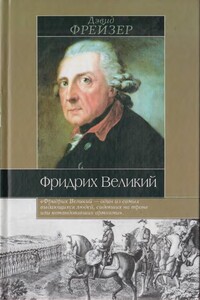
Фридрих Великий. Гений войны — и блистательный интеллектуал, грубый солдат — и автор удивительных писем, достойных считаться шедевром эпистолярного жанра XVIII столетия, прирожденный законодатель — и ловкий политический интриган… КАК человек, характер которого был соткан из множества поразительных противоречий, стал столь ЯРКОЙ, поистине ХАРИЗМАТИЧЕСКОЙ ЛИЧНОСТЬЮ? Это — лишь одна из загадок Фридриха Великого…
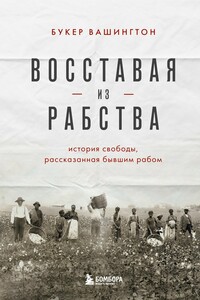
С чего началась борьба темнокожих рабов в Америке за право быть свободными и называть себя людьми? Как она превратилась в BLM-движение? Через что пришлось пройти на пути из трюмов невольничьих кораблей на трибуны Парламента? Американский классик, писатель, политик, просветитель и бывший раб Букер Т. Вашингтон рассказывает на страницах книги историю первых дней борьбы темнокожих за свои права. О том, как погибали невольники в трюмах кораблей, о жестоких пытках, невероятных побегах и создании системы «Подземная железная дорога», благодаря которой сотни рабов сумели сбежать от своих хозяев. В формате PDF A4 сохранен издательский макет книги.
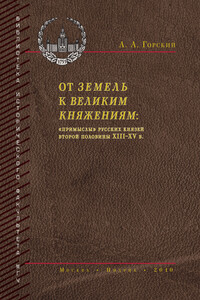
В монографии рассматриваются территориально-политические перемены на Руси в эпоху «ордынского ига», в результате которых вместо более десятка княжеств-«земель», существовавших в домонгольский период, на карте Восточной Европы остались два крупных государства – Московское и Литовское. В центре внимания способы, которыми русские князья, как московские, так и многие другие, осуществляли «примыслы» – присоединения к своим владениям иных политических образований. Рассмотрение всех случаев «примыслов» в комплексе позволяет делать выводы о характере политических процессов на восточнославянской территории в ордынскую эпоху.
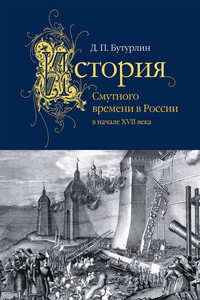
Книга в трёх частях, написанная Д. П. Бутурлиным, военно-историческим писателем, участником Отечественной войны 1812 года, с 1842 года директором Императорской публичной библиотеки, с 1848 года председатель Особого комитета для надзора за печатью, не потеряла своего значения до наших дней. Обладая умением разбираться в историческом материале, автор на основании редких и ценных архивных источников, написал труд, посвященный одному из самых драматических этапов истории России – Смутному времени в России с 1584 по 1610 год.
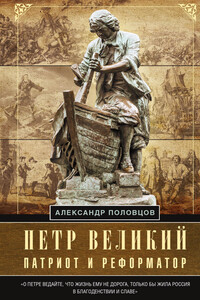
Для русского человека имя императора Петра Великого – знаковое: одержимый идеей служения Отечеству, царь-реформатор шел вперед, следуя выбранному принципу «О Петре ведайте, что жизнь ему не дорога, только бы жила Россия в благоденствии и славе». Историки писали о Петре I много и часто. Его жизнь и деяния становились предметом научных исследований, художественной прозы, поэтических произведений, облик Петра многократно отражен в изобразительном искусстве. Все это сделало образ Петра Великого еще более многогранным. Обратился к нему и автор этой книги – Александр Половцов, дипломат, этнограф, специалист по изучению языков и культуры Востока, историк искусства, собиратель и коллекционер.

В книге рассказывается история главного героя, который сталкивается с различными проблемами и препятствиями на протяжении всего своего путешествия. По пути он встречает множество второстепенных персонажей, которые играют важные роли в истории. Благодаря опыту главного героя книга исследует такие темы, как любовь, потеря, надежда и стойкость. По мере того, как главный герой преодолевает свои трудности, он усваивает ценные уроки жизни и растет как личность.